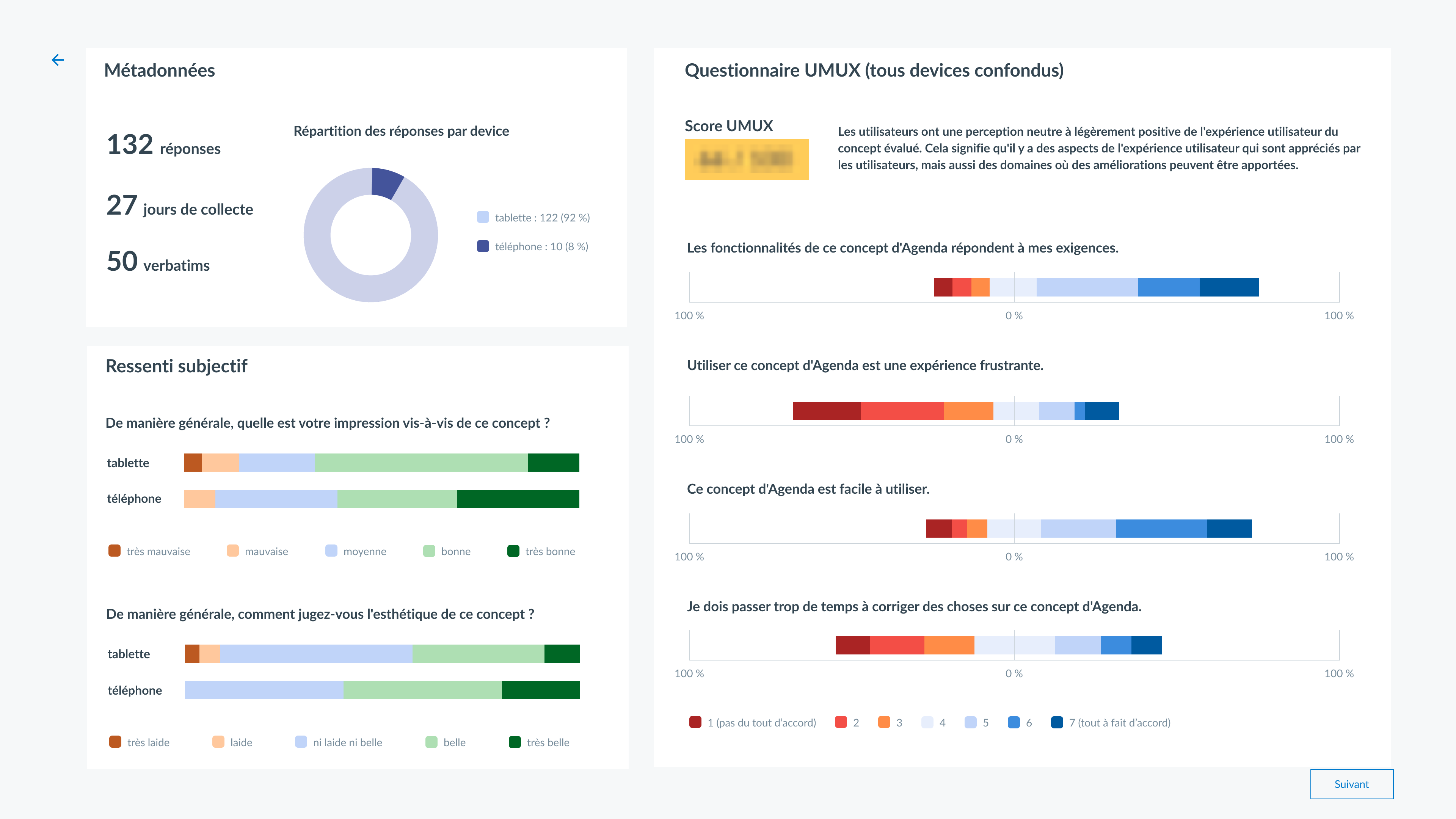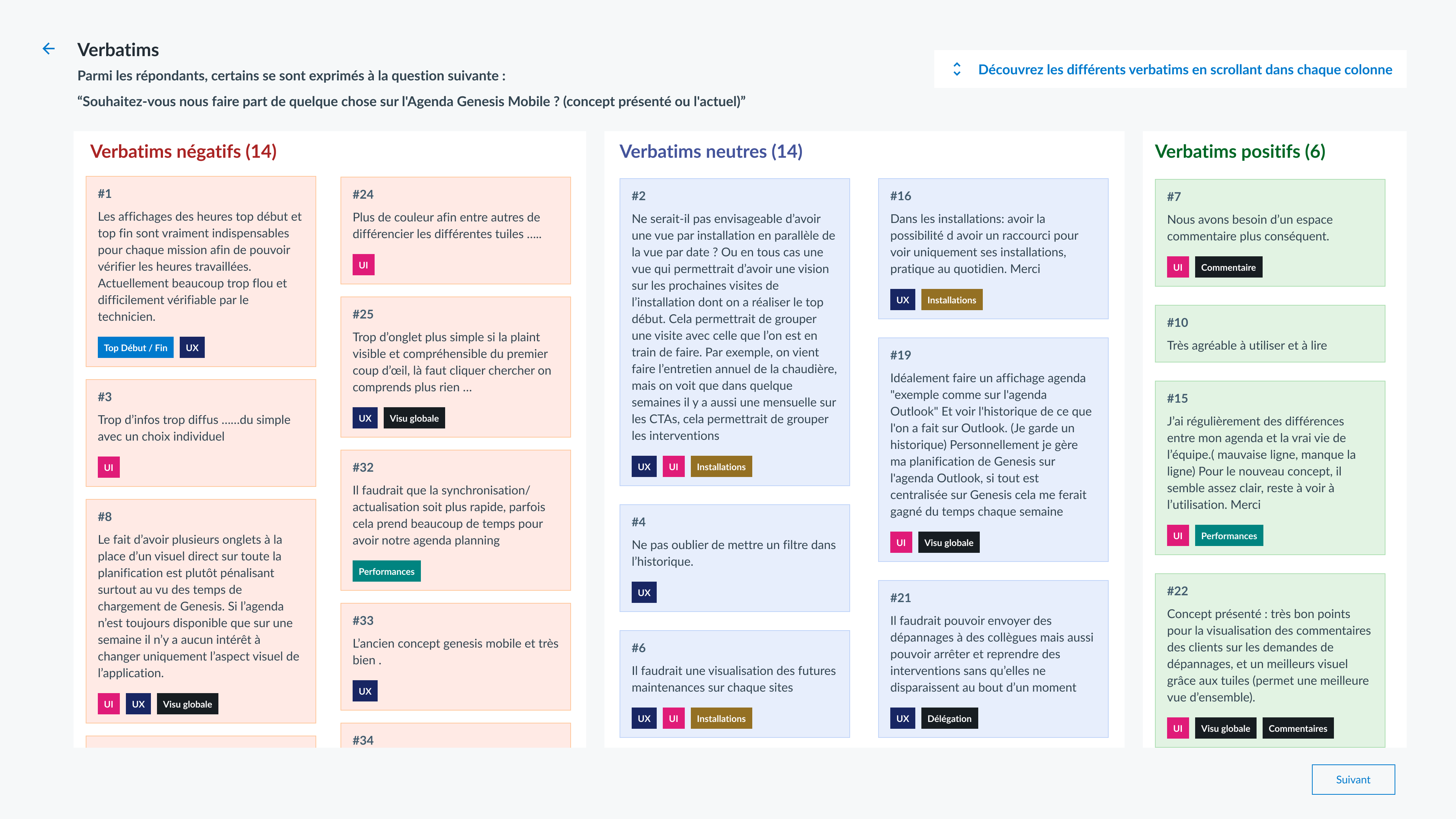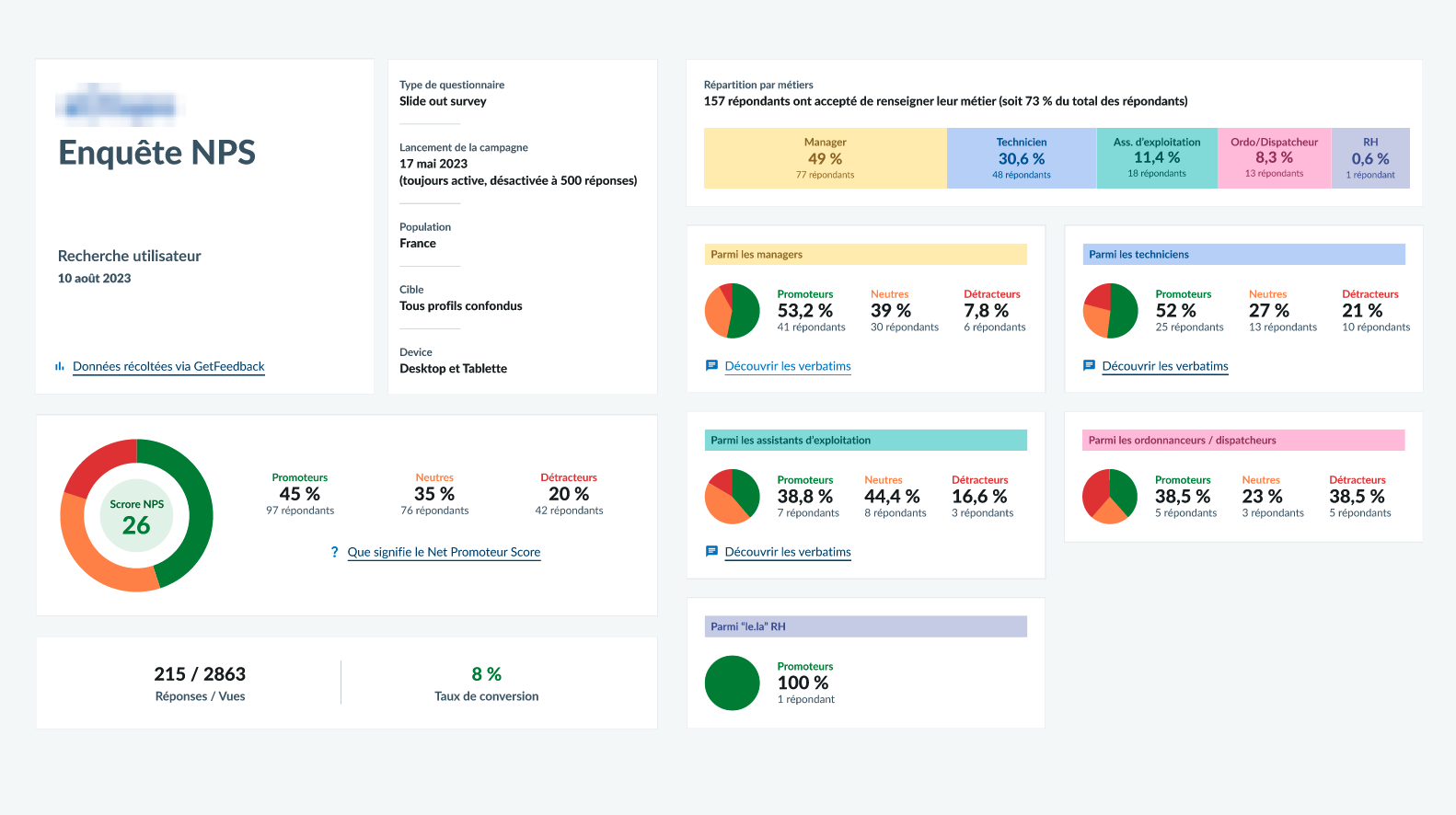2021 - present
ENGIE Headquarters, Paris La Défense
ENGIE Solutions DSI (IT Management Division) develops digital tools for ENGIE employees, supporting maintenance, technical operations, and human resources. As part of the ENGIE Group, ENGIE Solutions focuses on:
I began my mission at ENGIE Solutions as the sole designer within the DSI, embedded in a product team dedicated to technician mobility. ENGIE technicians rely on mobile applications for their daily activities, such as maintenance appointments, activity reporting, and administrative tasks.
The initial brief was to improve the user experience of these applications to enhance performance. However, I broadened my role by embedding a user-centered design approach at the core of digital product development within ENGIE’s DSI.
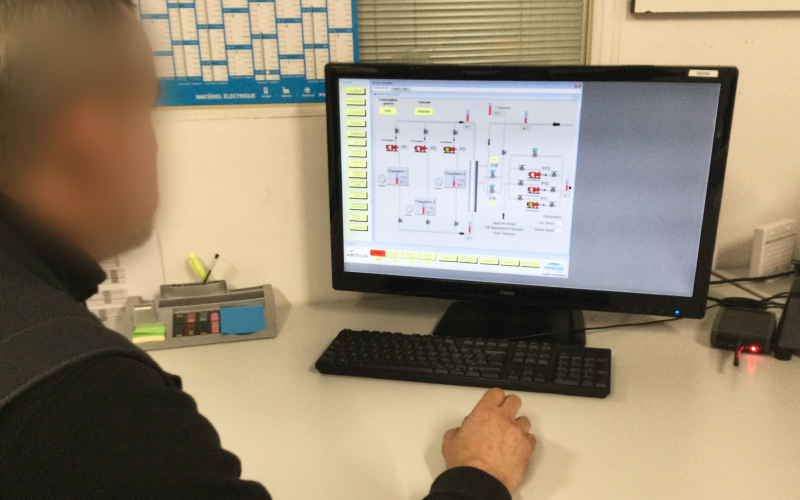

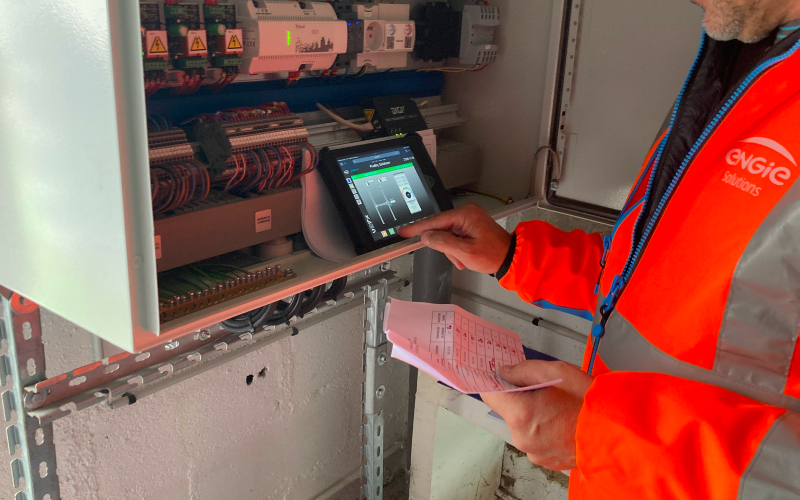
When I first joined, UX/UI design practices were virtually nonexistent within the organization. Alongside designing digital products and features, I invested time in familiarizing my team and stakeholders with user-centered design methods. To do so, I explained my workflow, the nature of my deliverables, and the value I could bring to the development team. Sitting alongside developers to understand their collaboration with the PO was also essential for integrating myself into the delivery process.
For example, one of my earliest assignments was to conduct a usability audit of an existing app using Nielsen’s heuristics. I went further by creating explanatory boards to guide my team on how to evaluate an interface through Nielsen’s principles.
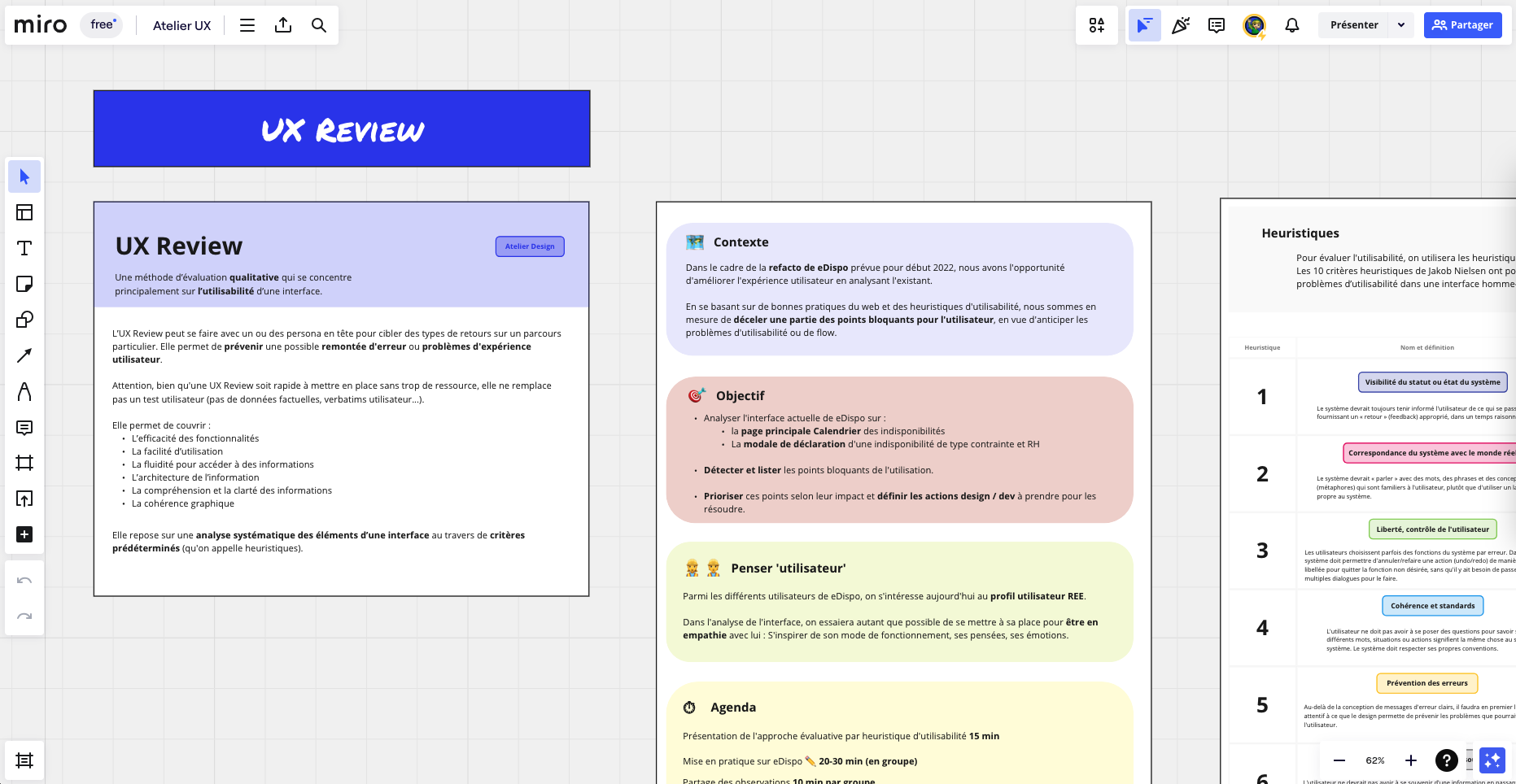
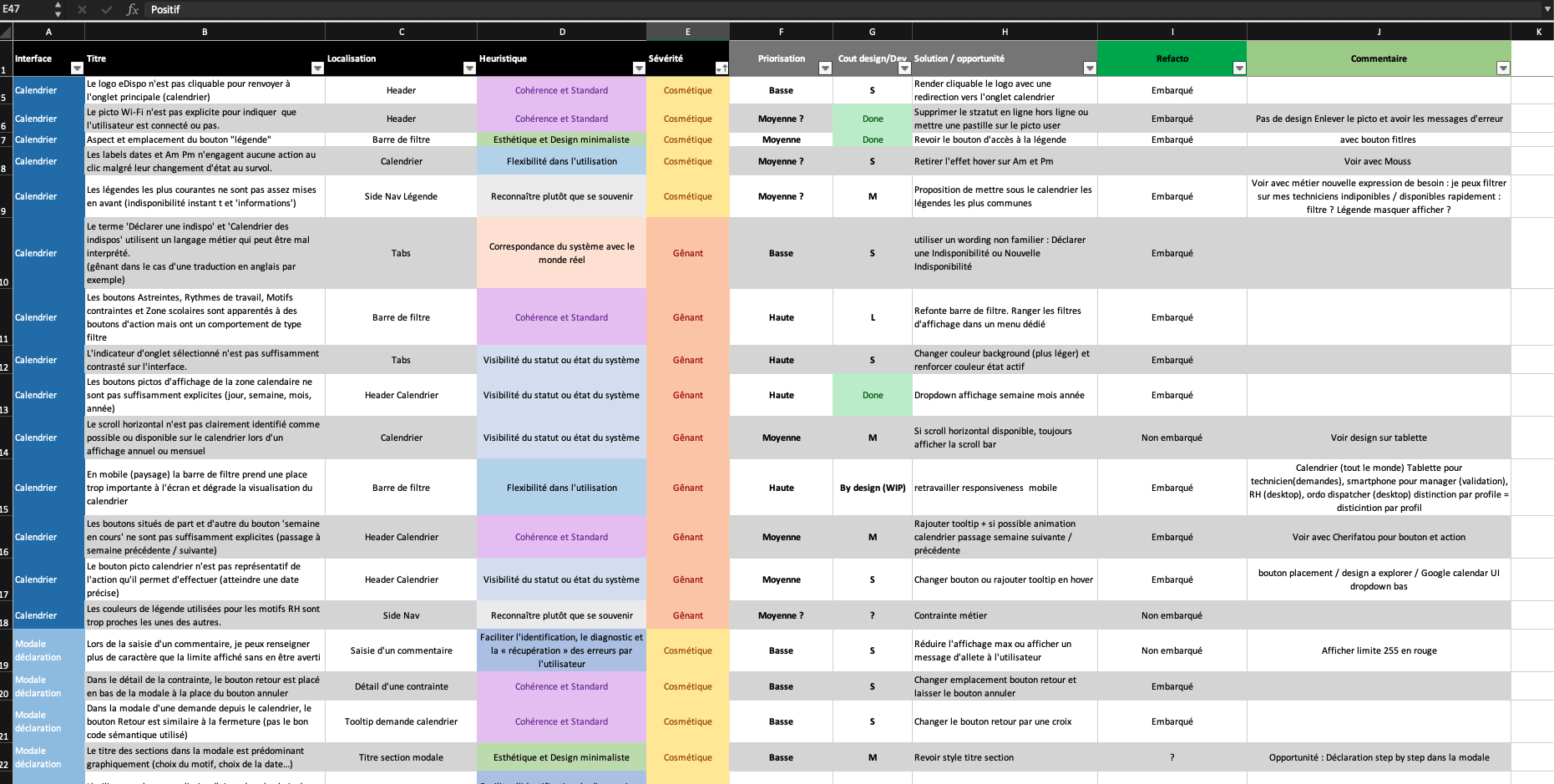
With only a vague understanding of end users, their pain points, and needs, I proposed — in agreement with the PO — to initiate a user research study. Its goal was to analyze the use of the current app and gain deeper insights into ENGIE technicians’ workflows. I planned this research outside of development sprints, including user interviews, on-site shadowing, and data analysis.
I organized observation sessions with technicians in the Paris area. The aim was to better understand technicians’ daily work and to uncover the issues they encountered with the current app. I also encouraged colleagues to join these field visits, giving them direct exposure to real users in real contexts. This was both an opportunity to introduce user-centered design methodologies and to strengthen the team’s connection with end users.

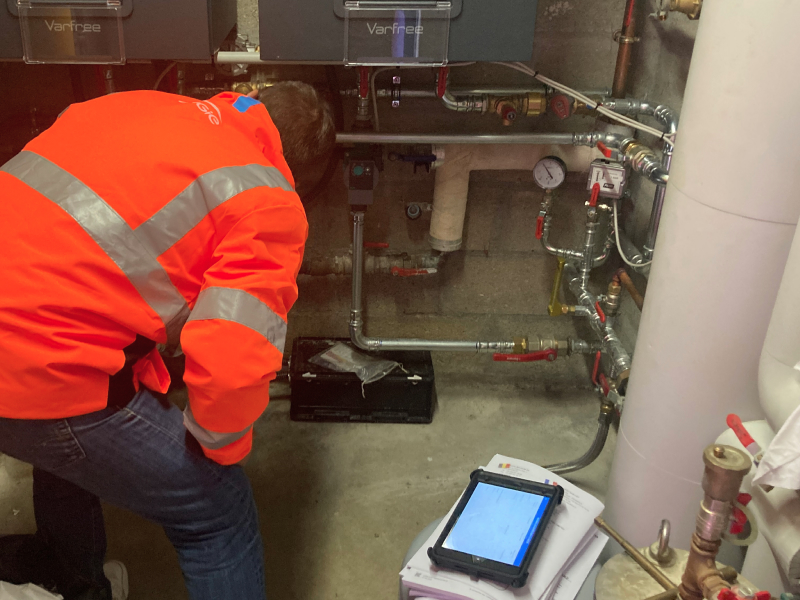
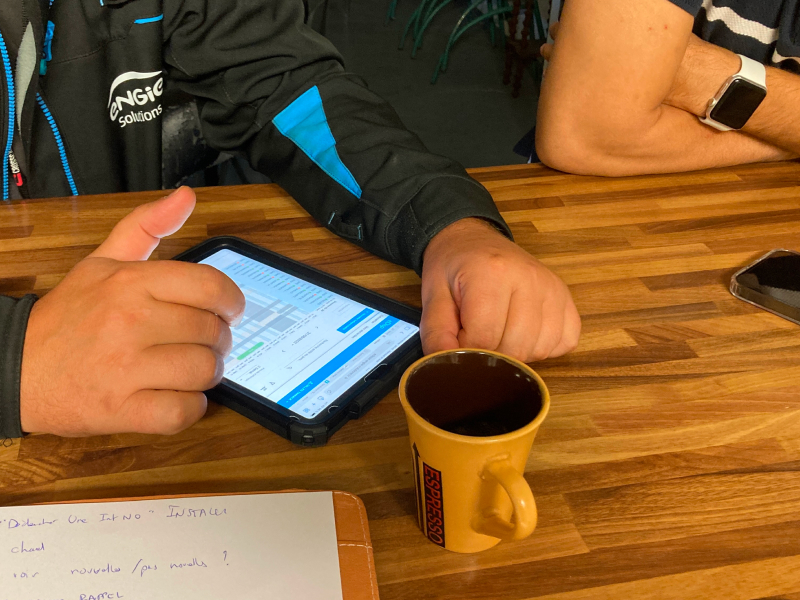
The reception from technicians was very positive — they even expressed interest in staying involved. Insights and methods were shared across other product teams, and the approach was well received by management. I synthesized my findings into several user journeys and two persona boards.
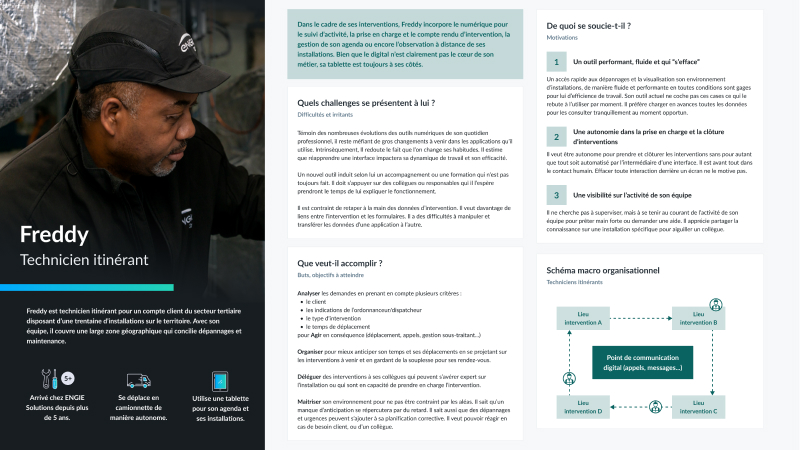
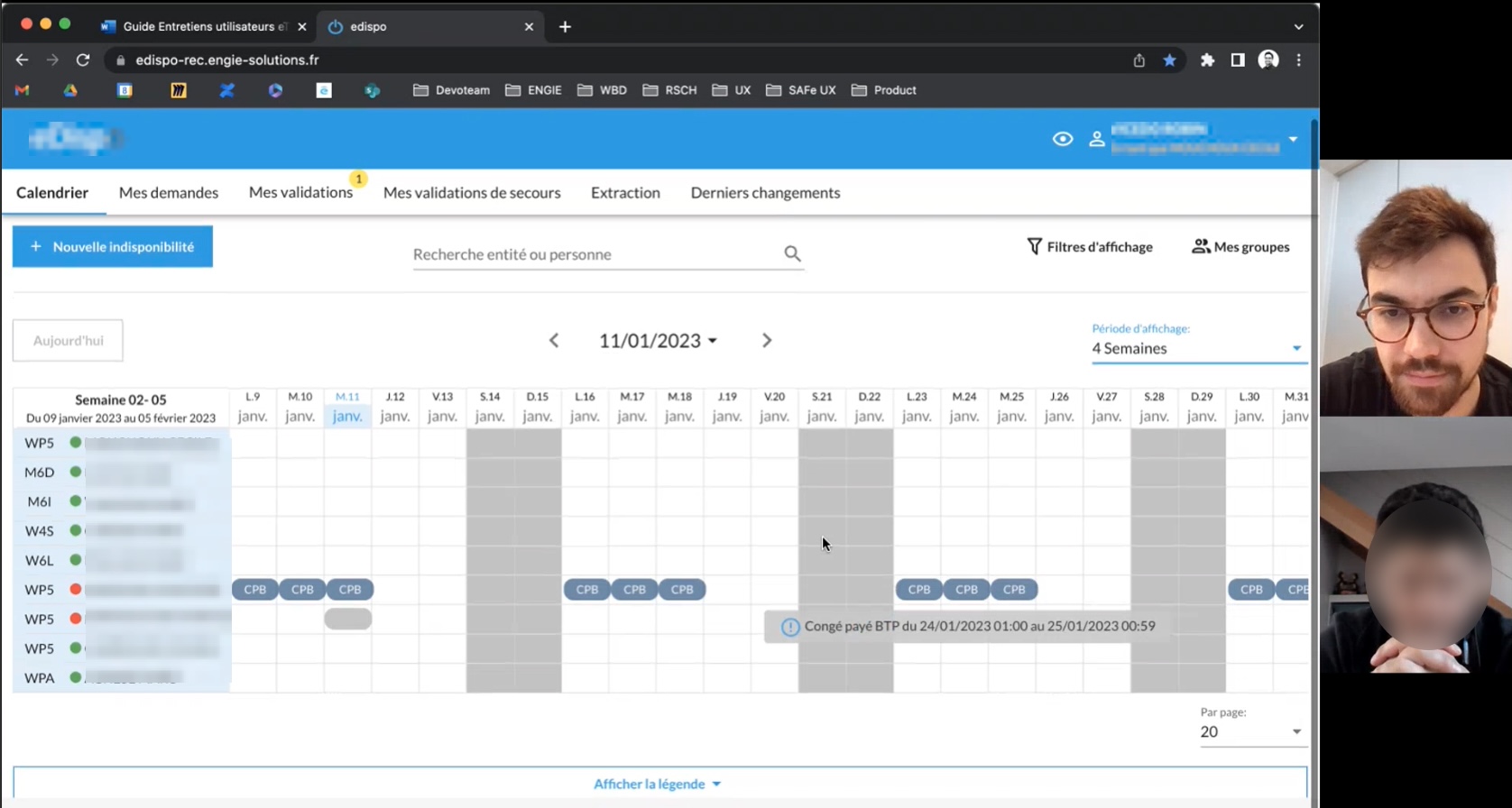
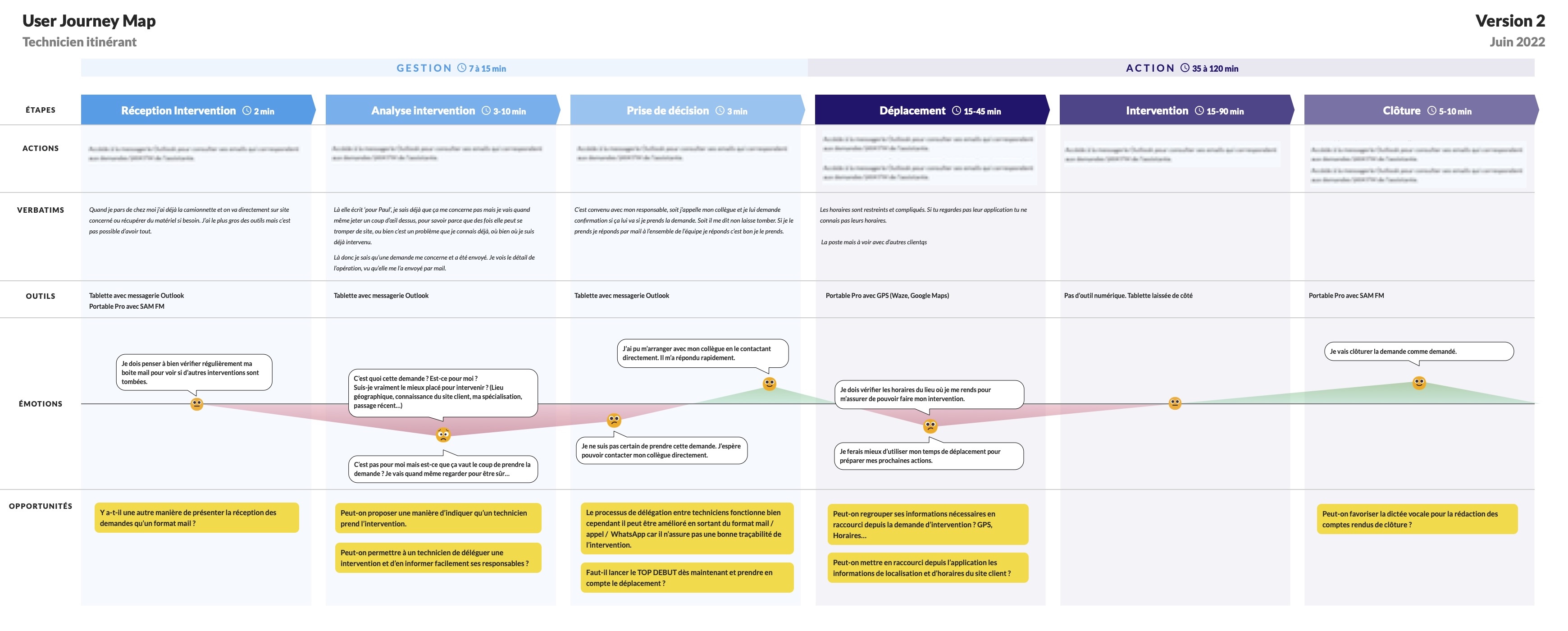
Once the research phase provided enough insight, we worked together to define the scope of work. Although we identified many pain points, it was critical to distinguish between process-related issues and tool-related ones. Using a gain–effort matrix with the PO, we prioritized three to four key needs. This allowed us to focus on designing features that were both valuable to users and technically feasible.
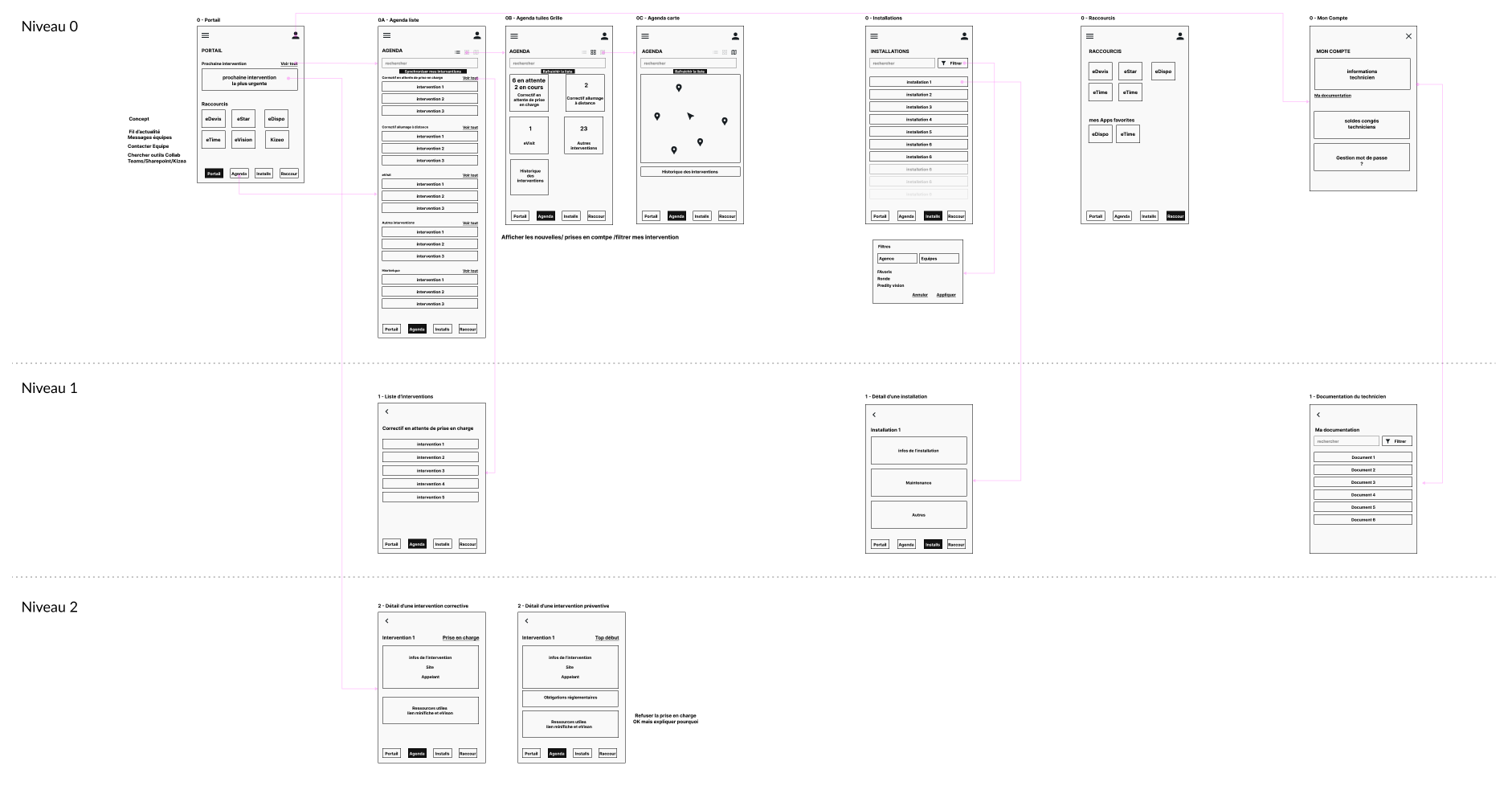
Zoning, mapping and wireflow
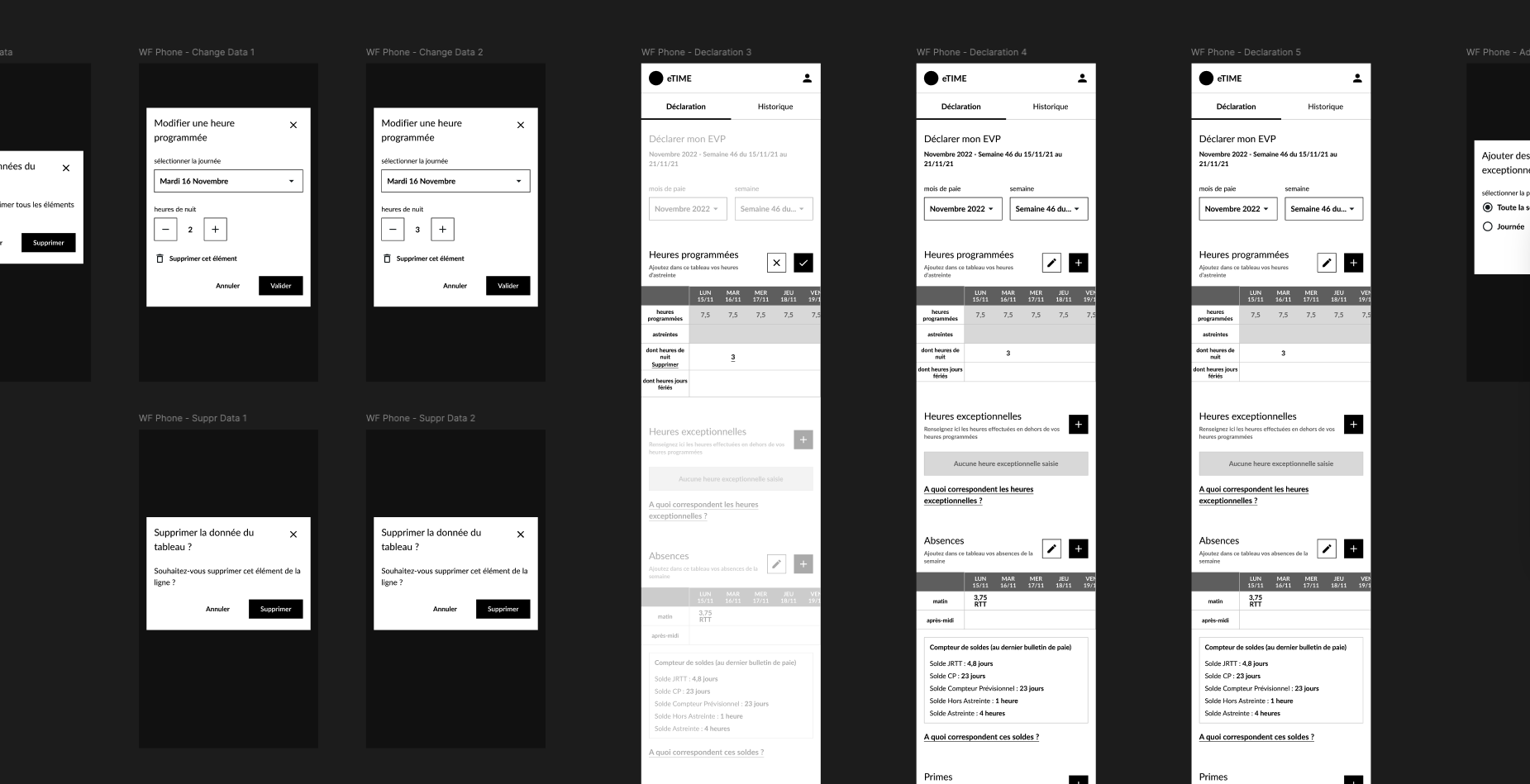
Wireframing with attention to tone of voice and CTA placement
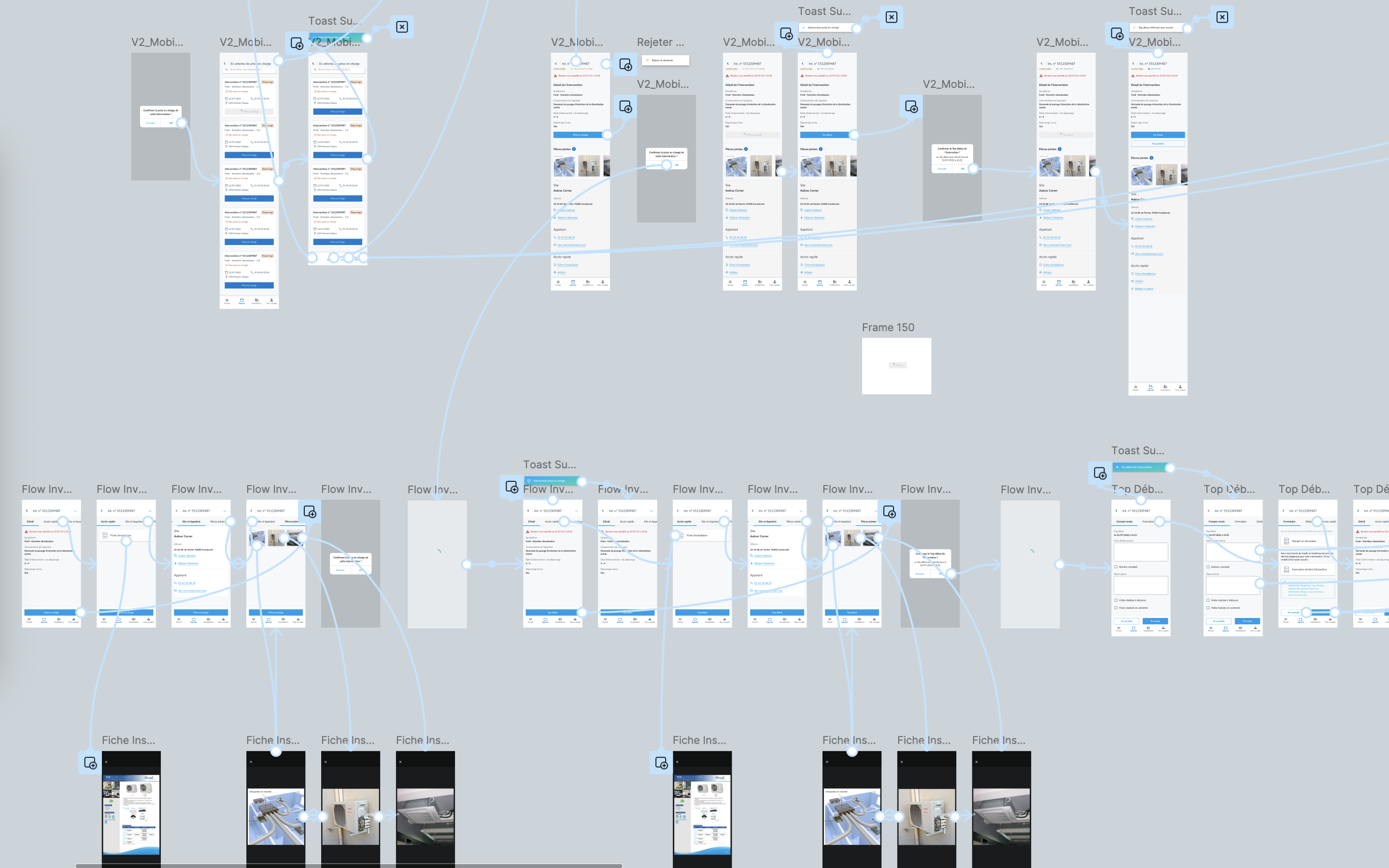
High-fidelity mockups using the design system and Figma variants
Adding micro-interactions to prepare realistic prototypes for user testing
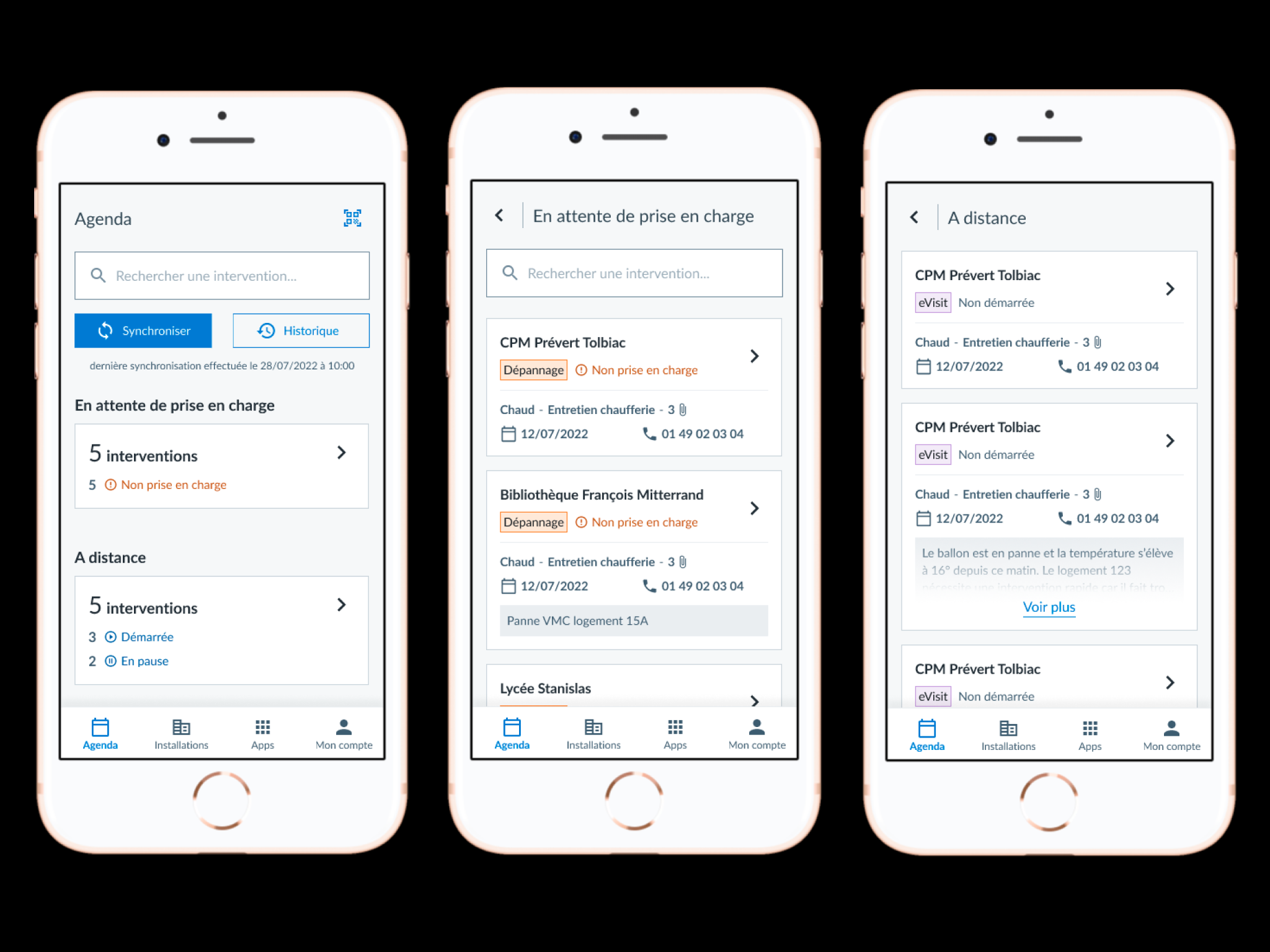
We validated our concepts through both qualitative and quantitative testing. It was essential to confirm that our designs aligned with user expectations before full-scale development. While we worked iteratively and implemented features progressively, the first release represented a major leap in both user experience and interface design (new workflows, a refreshed UI, and full integration of the design system).
